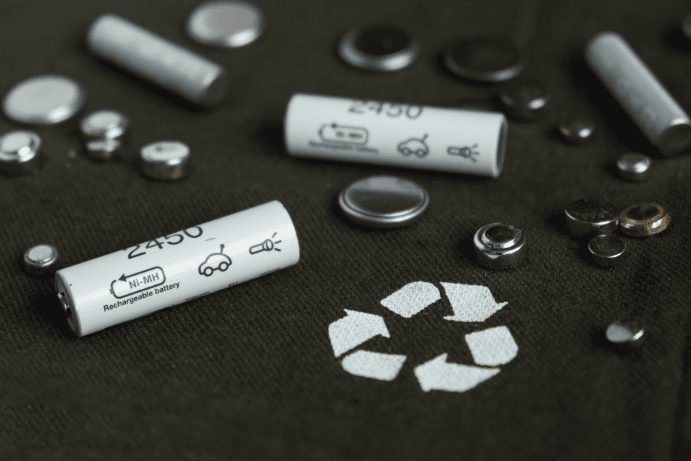In the race electric power lifestyle, battery-powered e-bikes, electric vehicles, and rechargeable daily life devices, the world is competing with high intensity. And, lithium-ion batteries have become critical to facilitate this lifestyle worldwide. But, this comes at a critical environmental cost, like the challenges associated with sourcing the critical metals for lithium-ion batteries are significant. A recent study from Stanford University offers a promising solution called recycling lithium-ion batteries. The research indicates that recycling reduces environmental impacts. Furthermore, recycling strengthens the long-term security of the supply chain for these essential battery minerals.
Recycling Process Vs Traditional Mining
Typically lithium-ion battery recyclers collect materials from two main sources. One such source is used batteries or dysfunctional batteries from workplaces and the second is scrap materials and defective materials from battery manufacturers. The recyclers collect these materials and process them to extract lithium, nickel, cobalt, copper, manganese, and aluminum.
In the latest study, researchers at Stanford University analyzed the environmental footprint of this recycling process. They found that this recycling process emits less than half of the greenhouse emissions gases (GHGs) compared to the traditional mining and refinement of these minerals. Also, the study offered one another crucial insight into this recycling process. The recycling process uses one-fourth of the water and energy compared to the conventional mining process.
The Environmental benefits are even more incredible from scrap materials. The battery manufacturers currently make up about 90% of the recycled supply.
For this stream, the environmental impacts are significantly lower:
- Greenhouse Gas Emissions: Only 19% of those from mining and processing.
- Water Use: Just 12% compared to traditional methods.
- Energy Use: A mere 11% of that is required for mining new metals.
The study’s senior author and assistant professor of chemical engineering in the School of Engineering, William Tarpeh reportedly said that this study tells us that we can build a sustainable future. We must work on key contributors of the environmental benefits and it is possible with battery recycling processes.
Role of Energy Sources
Researchers also stressed the importance of reduced energy consumption. They mentioned reduction in energy use also relates to less air pollutants like soot and sulfur. Thereby further enhancing environmental advantages. However, they did not measure quantification in specific.
The location of the battery recycling facility and source of electricity plays a pivotal role in the contribution to a sustainable environment. Facilities situated in regions that rely heavily on coal-generated electricity may experience a reduced climate advantage. Conversely, areas with cleaner energy mixes, including hydropower, geothermal, and solar, can maximize the environmental benefits of recycling.
Role of Transportation in Delivering Active Metals
Transportation also plays a crucial role. Currently, the journey of critical metals like cobalt and lithium from mining sites to processing facilities spans thousands of miles, contributing to higher emissions. As a part of cobalt mining and processing, 80% of the global supply of cobalt is mined in the Democratic Republic of the Congo. And for refining, 75% of the cobalt supply for batteries travels by road, rail, and sea to China.
On the other hand, the global supply of another precious material lithium is mined in Australia and Chile. Most of that lithium supply also makes its way to China. The study determined that the total transportation distance for conventional mining and refining of just the active metals in a battery averages about 35,000 miles (57,000 kilometers).
In contrast, collecting used batteries and scrap materials for recycling typically involves much shorter transportation distances. It also further reduces the environmental footprint.
The transportation of traditional mining of active metals in a battery is like going around the world one and a half times,” said Michael Machala, another lead author of the study.
Traditional recycling methods, such as pyrometallurgy, are energy-intensive, often requiring extremely high temperatures. But the company called Redwood kept environmental protection at heart. And they developed a patented process called “reductive calcination.” This process functions at lower temperatures. Additionally, it reduces the use of fossil fuels and yields more lithium than conventional methods.
Conclusion
Recycling lithium-ion batteries presents a viable and eco-friendly alternative to traditional mining. As the demand for rechargeable devices continues to grow, embracing sustainable practices in battery production and disposal becomes increasingly essential for a greener future.
Recycling lithium-ion batteries presents a viable and environmentally friendly alternative to traditional mining. The study shows adopting advanced recycling processes and strategically locating facilities in regions with clean energy sources could significantly reduce greenhouse gas emissions. Also, strengthens the security of the global supply of critical materials. As the demand for rechargeable devices continues to grow, embracing sustainable practices in battery production and disposal becomes increasingly essential for a greener future.

